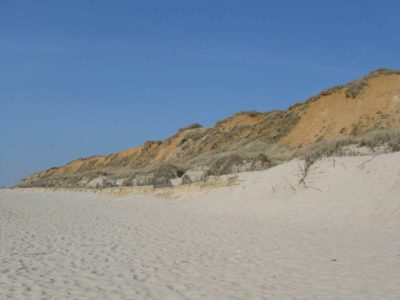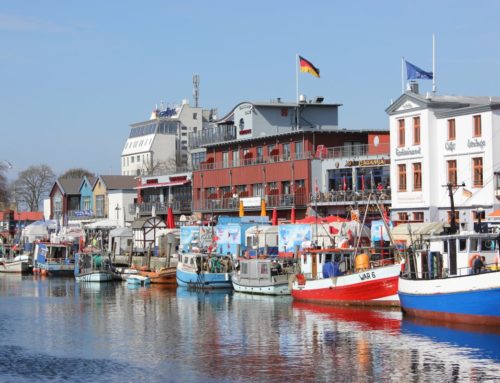The Red Cliff Sylt is an approx. 30 meter high cliff between the towns of Wenningstedt and Kampen on the North Sea island of Sylt in Schleswig-Holstein.
The cliff is on the west side of the island facing the open sea. In the south it begins south of the “Risgap” car park in Wenningstedt and in the north it ends at “Haus Kliffende” on the Kampener Westheide. A few meters to the north is the island’s highest elevation, the approximately 52.5 m high Uwe Dune, which, in contrast to the ice age edge of the cliff, was formed from post-glacial deposits of dune sand. The rust-red boulder clay that gave the Red Cliff on the island of Sylt its name got its color from the oxidation of iron-containing components.
Impressions of the Red Cliff Sylt
- Red cliff island of Sylt
- Island of Sylt Red Cliff
- Sylt Red Cliff North Sea
- Red Cliff Sylt Beach
Sylt island
Sylt is a North Sea island in northern Germany and is one of the North Frisian Islands in the federal state of Schleswig-Holstein. The island is around 38 km long and up to 13 km wide, although Sylt is only a few hundred meters wide in some places. Sylt is known for beautiful sandy beaches and a unique nature consisting of dunes, heath and mud flats. A large part of the area is under special protection (nature protection areas and Wadden Sea National Park). The island is a popular holiday destination for all ages, especially for people who enjoy water sports or just want to relax. There are many restaurants, bars and cafés along the coast (arguably the most famous restaurant on the island is Sansibar Sylt), as well as plenty of shopping (including Friedrichstrasse in Westerland) and cultural offerings. The best-known places on the island are Westerland, Kampen, List (northern tip) and Hörnum (southern tip of the island). Sylt is also known for its exclusive holiday homes, hotels and clubs. These are distributed almost all over the island, but are particularly pronounced in Kampen.











Leave A Comment